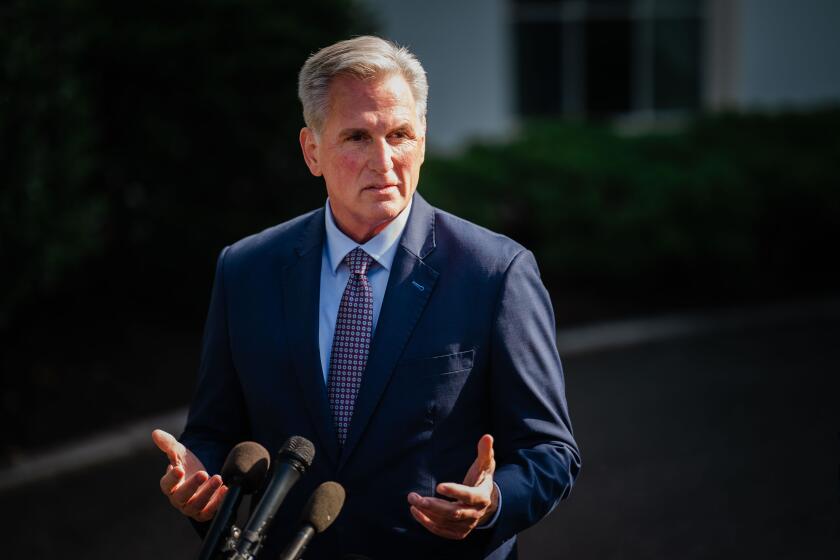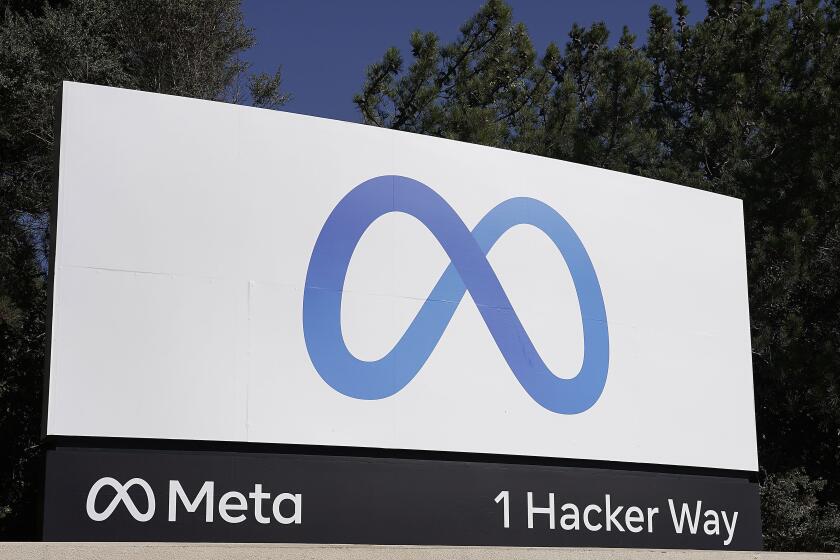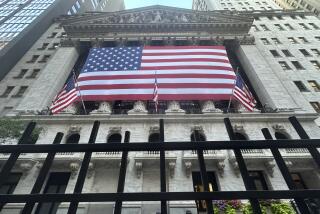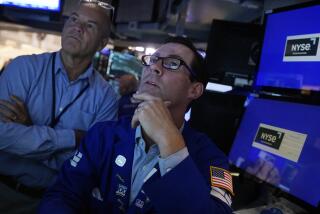Stocks are mixed as Wall Street waits to hear on U.S. debt-ceiling talks
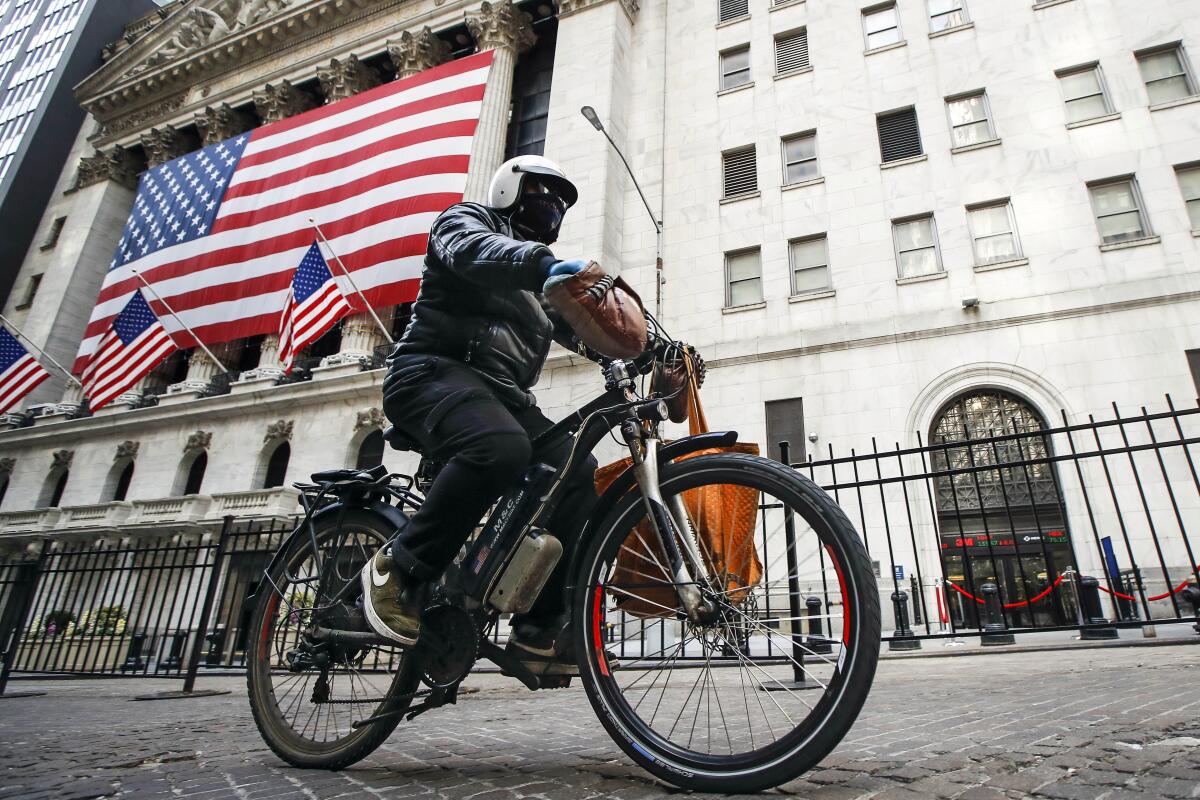
Stocks drifted to a mixed finish Monday, as Wall Street waited for the results of a pivotal meeting meant to avoid a potentially disastrous default on the U.S. government’s debt.
The Standard & Poor’s 500 index was at a virtual standstill after flipping between small gains and losses throughout the day. It edged up by 0.65 of a point, or less than 0.1%, to 4,192.63. The Dow Jones industrial average fell 140.05 points, or 0.4%, to 33,286.58, while the Nasdaq composite rose 62.88 points, or 0.5%, to 12,720.78.
The stock market is near its highest level since August, but it’s been mostly drifting within a tight range for weeks as several big worries weigh on it. The biggest near-term risk is the possibility of a U.S. default, something that could occur as soon as June 1.
That’s when Washington could run out of cash to pay its bills, unless Congress increases its credit limit and allows it to borrow more. Because U.S. Treasury bonds are widely seen as the safest investment on Earth, economists and investors say a default probably would trigger a recession for the economy and deep pain for financial markets.
President Biden and House Speaker Kevin McCarthy (R-Bakersfield) were set to meet after U.S. markets closed to discuss the debt limit. Talks so far have been start-and-stop, with stocks rallying in the middle of last week on hopes that a deal may be progressing, only to falter Friday when negotiations hit a roadblock.
The debt ceiling is plainly unconstitutional and a nuclear weapon in the hands of willful children. It’s time to ignore it.
Another worry that has hung over the market is the strength of the U.S. banking system, which has begun to crack under the weight of much higher interest rates. Three high-profile U.S. bank failures have shaken confidence since March, and investors have been on the lookout for the next possible weak link.
Much scrutiny has been on PacWest Bancorp. Its stock jumped 19.5% after it said it had agreed to sell a portfolio of real estate construction loans with about $2.6 billion in principal still outstanding to Kennedy Wilson, among other assets.
PacWest is one of the smaller and midsize regional banks that Wall Street highlighted as it hunted for the next possible bank to suffer a drop in confidence. Other banks collapsed after depositors pulled their cash all at once. PacWest’s stock is still down 70.2% for the year.
Elsewhere on Wall Street, Micron Technology dropped 2.8% as tensions heighten between China and the United States. China’s government said Sunday that Micron’s products have unspecified “serious network security risks” that could affect national security. It told users of sensitive computer equipment to stop buying Micron products.
Meta Platforms rose 1.1% after shaking off news that European regulators hit it with a record $1.3-billion privacy fine and ordered it to stop transferring users’ personal information across the Atlantic by October. Meta called the decision flawed and unjustified. It said it would appeal.
The European Union has slapped Meta with a record $1.3-billion privacy fine and ordered it to stop transferring user data across the Atlantic.
Meta has been on a tear this year, more than doubling in 2023 already. Other Big Tech companies have also had powerful leaps, much stronger than the rest of the market.
But that split in performance, which has kept the overall S&P 500 resilient when many stocks are weakening, is worrying some market watchers. It has left the index looking historically top heavy, meaning its performance is more dependent on just a handful of stocks than it’s been in decades.
Much of the excitement has been around artificial intelligence, but that hasn’t been enough to turn around some of Wall Street’s more pessimistic voices.
“While we believe AI is for real and will likely lead to some great efficiencies that help to fight inflation, it’s unlikely to prevent the deep earnings recession we forecast for this year,” Michael Wilson and other strategists at Morgan Stanley wrote in a report.
S&P 500 companies are in the midst of reporting a second straight quarter of profit drops from year-earlier levels. The question is how much worse they will get because the economy is slowing under the weight of much higher interest rates meant to get inflation under control.
On the more optimistic side is Savita Subramanian, equity strategist at Bank of America. She raised her target for where the S&P 500 will end the year to 4,300 from 4,000. That’s not far from its current level, but she also said in a BofA Global Research report that stocks outside the behemoths at the top probably will be behind most of the gains.
She pointed to improved efficiencies at companies, which should help earnings become more stable, while acknowledging all the risks that could keep stocks in a long-term down market, or what’s called a bear market.
“For the bear case, talk to the person next to you,” she said, who can bring up such matters as worries about the Federal Reserve making a mistake on interest rate policy and the debt ceiling.
In the bond market, the 10-year Treasury yield ticked up to 3.71% from 3.68% late Friday. It helps set rates for mortgages and other important loans. The two-year yield, which moves more on expectations for the Fed, rose to 4.32% from 4.28%.
Hopes are high that the Fed will start taking it easier on interest rates by leaving them steady at its next meeting in June. That would be the first time it hasn’t hiked rates at a meeting in more than a year.
In stock markets abroad, Japan’s Nikkei 225 rose 0.9% to continue a big run over the last couple of weeks. The Hang Seng in Hong Kong rose 1.2%, while stock indexes were mixed across Europe.
AP writers Yuri Kageyama and Matt Ott contributed to this report.
More to Read
Inside the business of entertainment
The Wide Shot brings you news, analysis and insights on everything from streaming wars to production — and what it all means for the future.
You may occasionally receive promotional content from the Los Angeles Times.
